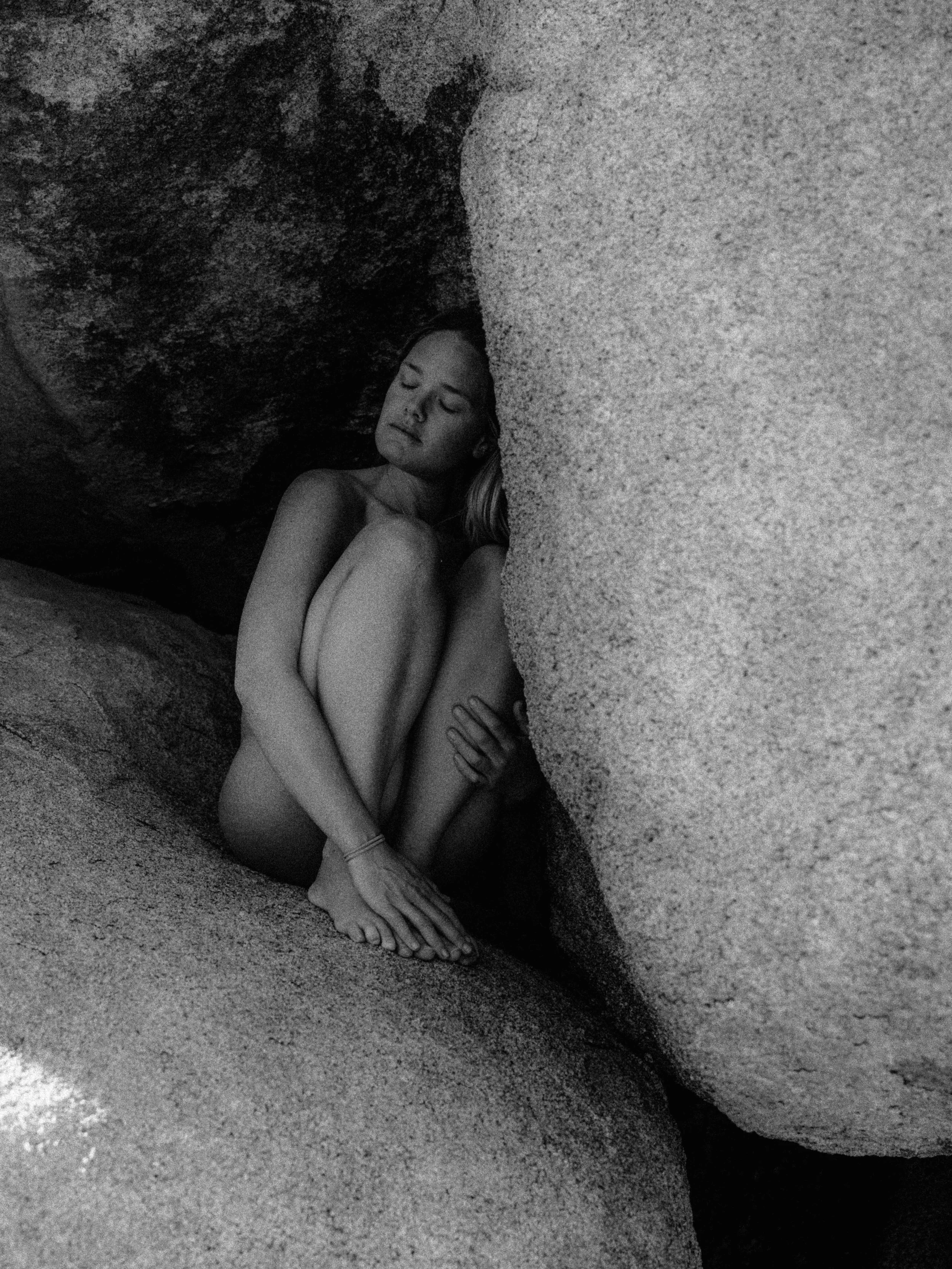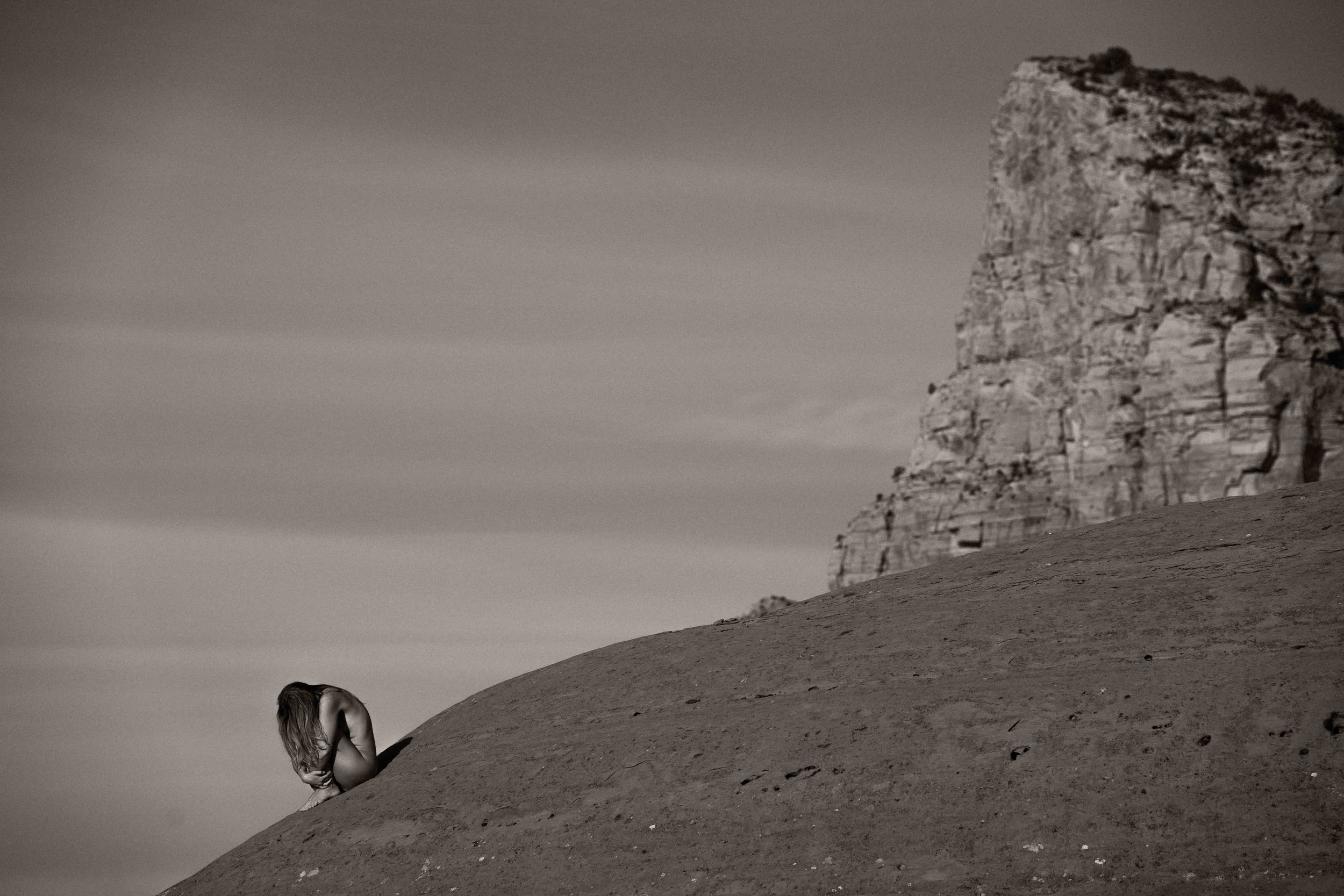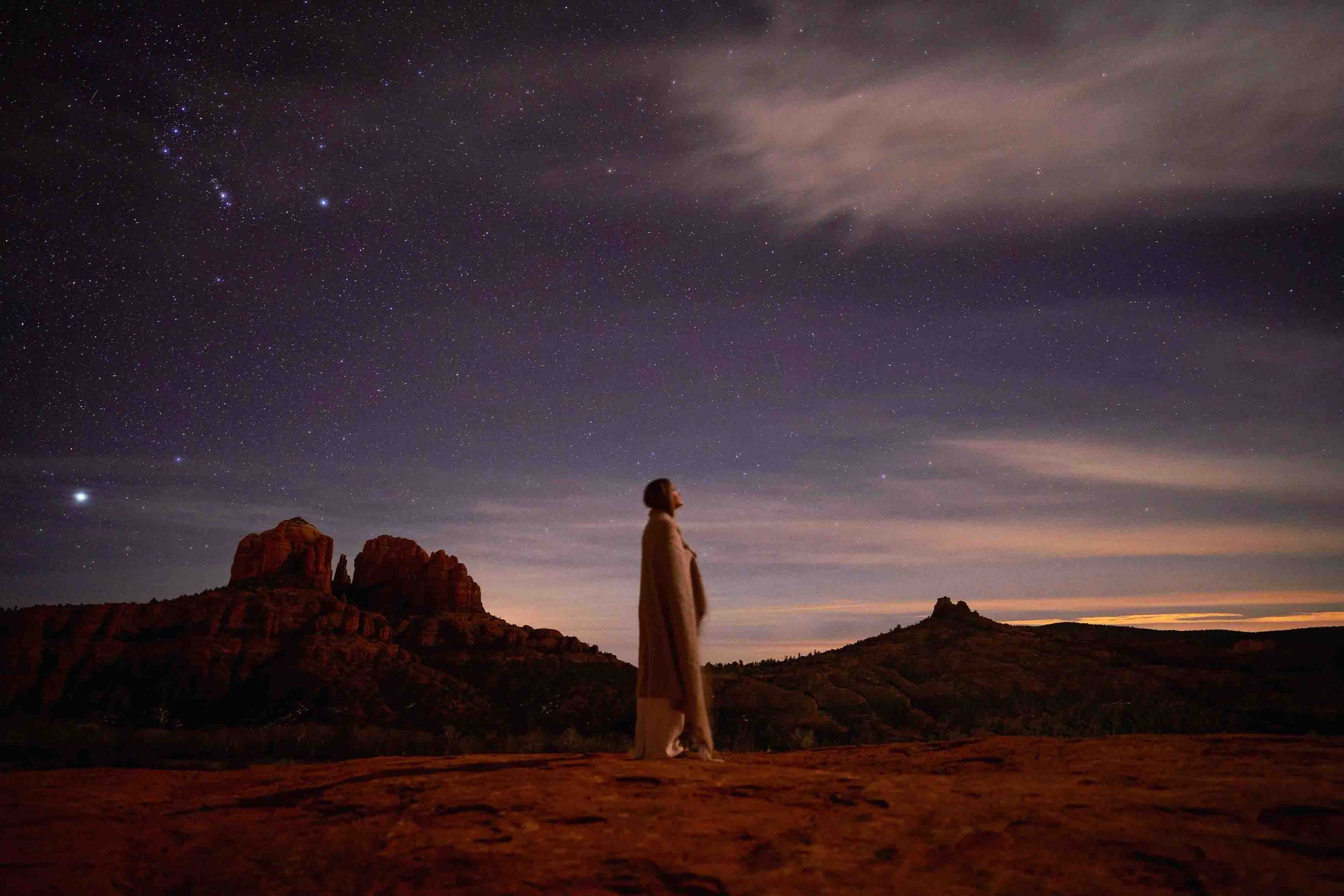Vessel
There are moments
when you see through the image of your reflection—
and you see yourself.
This living, breathing body—
an ever-changing landscape,
a vessel for your life—
holding the silent story of every joy, every sorrow, every moment lived.
And suddenly, beauty becomes something deeper than decoration.
It becomes the truth carved into your bones—
the story of YOU.
To look at your reflection without the urge to change it,
To be here now—
present in this vessel
holding every chapter,
every memory,
every ounce of love and loss—
the only one that’s always been with you, a witness to everything you are.
We were never meant to stay the same.
We are not monuments,
but living, breathing love letters
to everything we’ve walked through.
The world chases illusions of perfection.
But we are the wild truth.
A prayer in motion.
Forever changing.
What We Cannot Hold
There are days when life spills into us.
And we cannot quite recover.
We take in more than we can hold.
And when it’s just a bit too much,
we overflow.
Things begin to unravel—
and maybe, gently,
they were never meant to hold together in the first place.
The world spins fast.
We live in a dream state—
a carousel of wanting.
A digital landscape that rewards our longing,
but rarely our stillness.
It keeps us reaching,
always just out of touch with enough.
And beneath it all,
the quiet fear of being alone.
Of stopping long enough
to feel what’s really there.
The tenderness. The ache.
The softness underneath it all.
But maybe there’s still a place we can return to.
Not to escape,
but to remember.
To root back into something real.
Something ancient and steady.
As much as my art is made of paint,
the blood that moves through me as an artist
is connection—
to this life, this earth,
to something more poetic than words.
To the stillness that has always known who we are.
In my mind, I often go back to the desert.
To my body becoming stone.
To the wind carving its name
into million-year-old rock.
Time speaking without language.
Learning to See
We think we know what it means to see.
Our eyes open, and the world floods in.
Color, shape, light, shadow.
We assume sight is simple. That what we witness is truth.
But the truth is, we do not see things as they are.
We see them as we are.
Our desires and fears bend the light,
our histories blur the edges.
Vision is not neutral.
It is layered with longing
and with the stories we have told ourselves.
Painting has been my greatest teacher in this.
It is not only an act of creation,
but a practice of dismantling control.
Each time I stand before a canvas,
I am asked to let go of what I think I know,
to surrender the image in my mind
and open to what is truly before me.
Light and darkness are never separate.
They hold each other, inseparable,
as beginning holds ending,
as birth holds death,
as joy holds grief.
Every edge dissolves into another.
What we believe to be solid is always shifting.
The closer you look, the more you see
that there is no boundary at all.
When I paint, I am not just making marks.
I am learning to see without grasping,
to witness without clinging.
The object, the person, the idea of what should be
falls away.
And in that falling away, truth emerges.
To truly see is to be in a state of perpetual rebirth.
Each day offers the chance to begin again,
to meet the world as if for the very first time.
Picasso once said that every child is an artist.
Perhaps he meant that a child’s vision is unclouded,
their sight free of the narratives we inherit over time.
Painting has taught me to return to that way of seeing.
Not through force or control,
but through presence,
through deep listening,
through trust.
When I paint, I am not simply making an image.
I am dissolving the barrier between seer and seen.
I am dissolving myself.
In those rare moments of true seeing,
there is no painter, no subject, no canvas.
There is only the mystery
of light moving through color,
of breath moving through body,
of life revealing itself exactly as it is.
And for a moment,
everything is whole.
The Ineffable Nature of Art
Some things cannot be named.
They can only be felt, held briefly, and released.
Art lives in this space, between what is fleeting and what is eternal.
Art is a paradox.
To make art is to attempt the impossible, to give form to that which cannot be contained.
Life, time, and consciousness are not things we can hold in our hands, yet the artist reaches into this ungraspable current and shapes it into something tangible.
This is the mystery of art: it is at once the most natural of human impulses and the most profoundly unnatural act.
It rises from the same source as rivers and roots and breath, yet it dares to defy nature by holding still what was never meant to be fixed: time.
A painting is not simply an image, but a threshold, a trembling place where the temporal and the eternal meet.
The river of time flows endlessly forward, and in its current everything dissolves.
Moments arise, shimmer briefly, and vanish.
Heraclitus wrote that we can never step into the same river twice, for both the river and we ourselves are always changing.
To live is to move through this ceaseless flux, to exist inside an impermanence so complete that nothing truly remains.
And yet, when we paint, write, sing, or sculpt, we freeze a fragment of that river, holding it in place against the rush of dissolution.
The painting becomes a vessel for what has already passed, an echo of a moment that cannot return.
Art gives shape to the invisible.
A song holds the ache of passing time.
A photograph becomes a reliquary of light.
A painting collapses centuries of human longing into a single frame.
History lives inside the present moment, layered and alive.
When we stand before a work of art, we are standing inside this paradox.
We feel the immediacy of now and the weight of everything that has ever been.
In this way, art is both reverence and defiance.
It reveres the fleeting beauty of life by attempting to honor it, to witness it fully.
But it also defies the natural order, for in nature nothing holds still.
The wind moves, water flows, bodies age, stars die.
Only art resists this constant movement, insisting that something of the moment can endure.
This is why Rothko spoke of painting as a place where the infinite and the finite meet.
His vast fields of color were not merely images but thresholds, places where a viewer could experience the immediacy of being while sensing its boundlessness.
The canvas becomes a portal, simultaneously fragile and eternal.
Yet to capture is also to distort.
Every act of framing is an act of exclusion, a choice about what will be preserved and what will vanish.
Jung understood that symbols, the language of the unconscious, are always partial, never whole.
They point toward mystery but cannot fully contain it.
Art moves in this same symbolic register.
It does not truly seize the ineffable, it gestures toward it, evokes it, suggests it.
Like a dream, a work of art opens a doorway without revealing the entire landscape beyond.
Perhaps this is why art moves us so profoundly.
It reminds us of our own impermanence while also offering a glimpse of the eternal.
In the face of entropy, it says that this moment matters.
The brushstroke, the note, the word, they hold within them the pulse of something larger than themselves.
And yet, they are never complete.
Every painting is unfinished, even the ones we call finished, because life itself continues beyond its frame.
To be an artist is to live inside this tension.
We are forever reaching toward something we can never fully touch.
We gather fragments of time and place them gently on the canvas, knowing they are both true and inadequate.
This is not failure but devotion.
As Kierkegaard wrote, faith itself lives in paradox.
To create is to leap, to surrender to the mystery while daring to give it form.
For me, painting is water.



